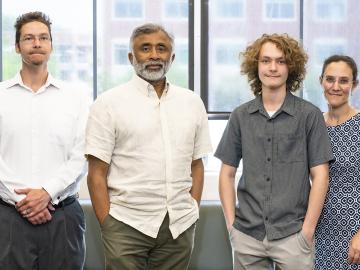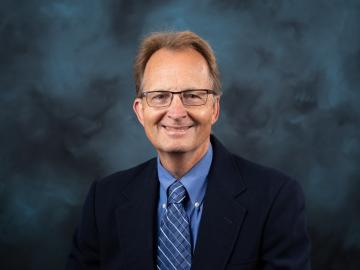
Filter News
Area of Research
- Advanced Manufacturing (1)
- Biology and Environment (33)
- Biology and Soft Matter (1)
- Computer Science (1)
- Electricity and Smart Grid (1)
- Energy Science (23)
- Functional Materials for Energy (1)
- Fusion and Fission (8)
- Isotopes (1)
- Materials (16)
- Materials for Computing (4)
- National Security (9)
- Neutron Science (4)
- Supercomputing (16)
News Topics
- (-) Artificial Intelligence (14)
- (-) Clean Water (5)
- (-) Computer Science (20)
- (-) Environment (36)
- (-) Fusion (7)
- (-) Polymers (5)
- (-) Security (4)
- 3-D Printing/Advanced Manufacturing (12)
- Advanced Reactors (4)
- Big Data (9)
- Bioenergy (19)
- Biology (28)
- Biomedical (6)
- Biotechnology (3)
- Buildings (16)
- Chemical Sciences (15)
- Composites (3)
- Coronavirus (9)
- Critical Materials (4)
- Cybersecurity (7)
- Element Discovery (1)
- Energy Storage (25)
- Exascale Computing (8)
- Fossil Energy (1)
- Frontier (10)
- Grid (13)
- High-Performance Computing (16)
- Hydropower (8)
- Irradiation (1)
- Isotopes (4)
- ITER (2)
- Machine Learning (10)
- Materials (37)
- Materials Science (16)
- Mercury (1)
- Microscopy (13)
- Nanotechnology (9)
- National Security (17)
- Neutron Science (12)
- Nuclear Energy (10)
- Partnerships (8)
- Physics (10)
- Quantum Computing (7)
- Quantum Science (9)
- Simulation (6)
- Space Exploration (4)
- Summit (7)
- Transportation (10)
Media Contacts

It’s a simple premise: To truly improve the health, safety, and security of human beings, you must first understand where those individuals are.

What’s getting Jim Szybist fired up these days? It’s the opportunity to apply his years of alternative fuel combustion and thermodynamics research to the challenge of cleaning up the hard-to-decarbonize, heavy-duty mobility sector — from airplanes to locomotives to ships and massive farm combines.

Researchers at ORNL are teaching microscopes to drive discoveries with an intuitive algorithm, developed at the lab’s Center for Nanophase Materials Sciences, that could guide breakthroughs in new materials for energy technologies, sensing and computing.

Oak Ridge High School senior James Rogers has been named recipient of the 2022 UT-Battelle Scholarship to attend the University of Tennessee.

A team of researchers has developed a novel, machine learning–based technique to explore and identify relationships among medical concepts using electronic health record data across multiple healthcare providers.

A study led by researchers at ORNL could help make materials design as customizable as point-and-click.

Stan Wullschleger, associate laboratory director for biological and environmental systems science at ORNL, is the recipient of the 2022 Commitment to Human Diversity in Ecology Award from the Ecological Society of America, or ESA.

A new Department of Energy report produced by Oak Ridge National Laboratory identifies several supply chain must-haves in maintaining the pivotal role hydropower will play in decarbonizing the nation’s grid.

Tackling the climate crisis and achieving an equitable clean energy future are among the biggest challenges of our time.

ORNL biogeochemist Elizabeth Herndon is working with colleagues to investigate a piece of the puzzle that has received little attention thus far: the role of manganese in the carbon cycle.


